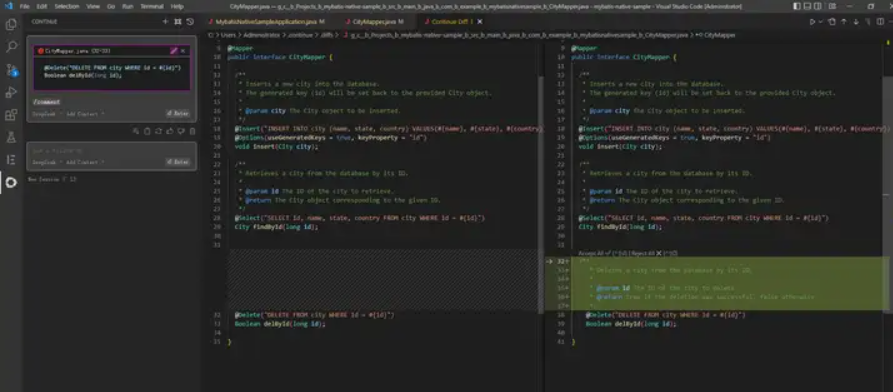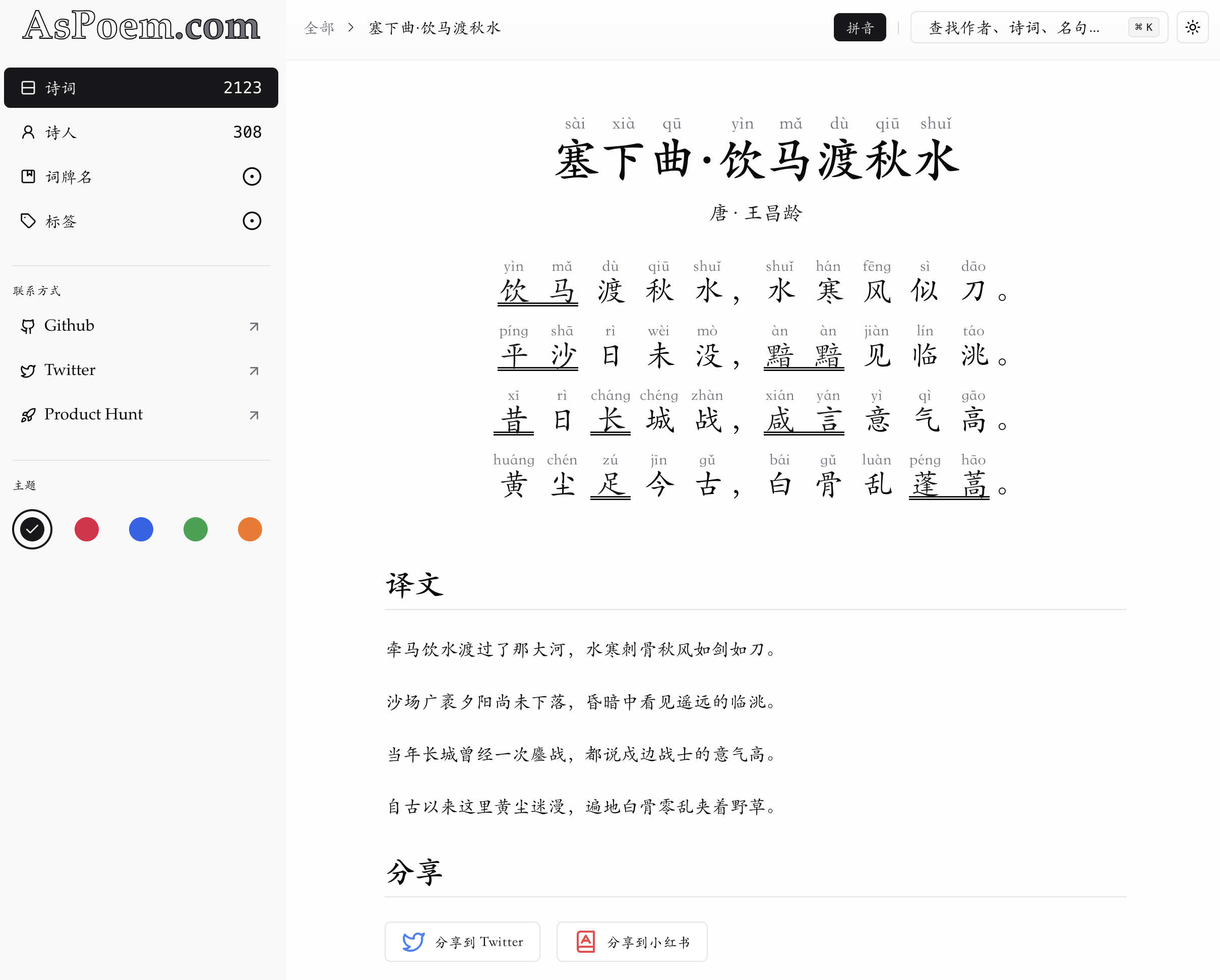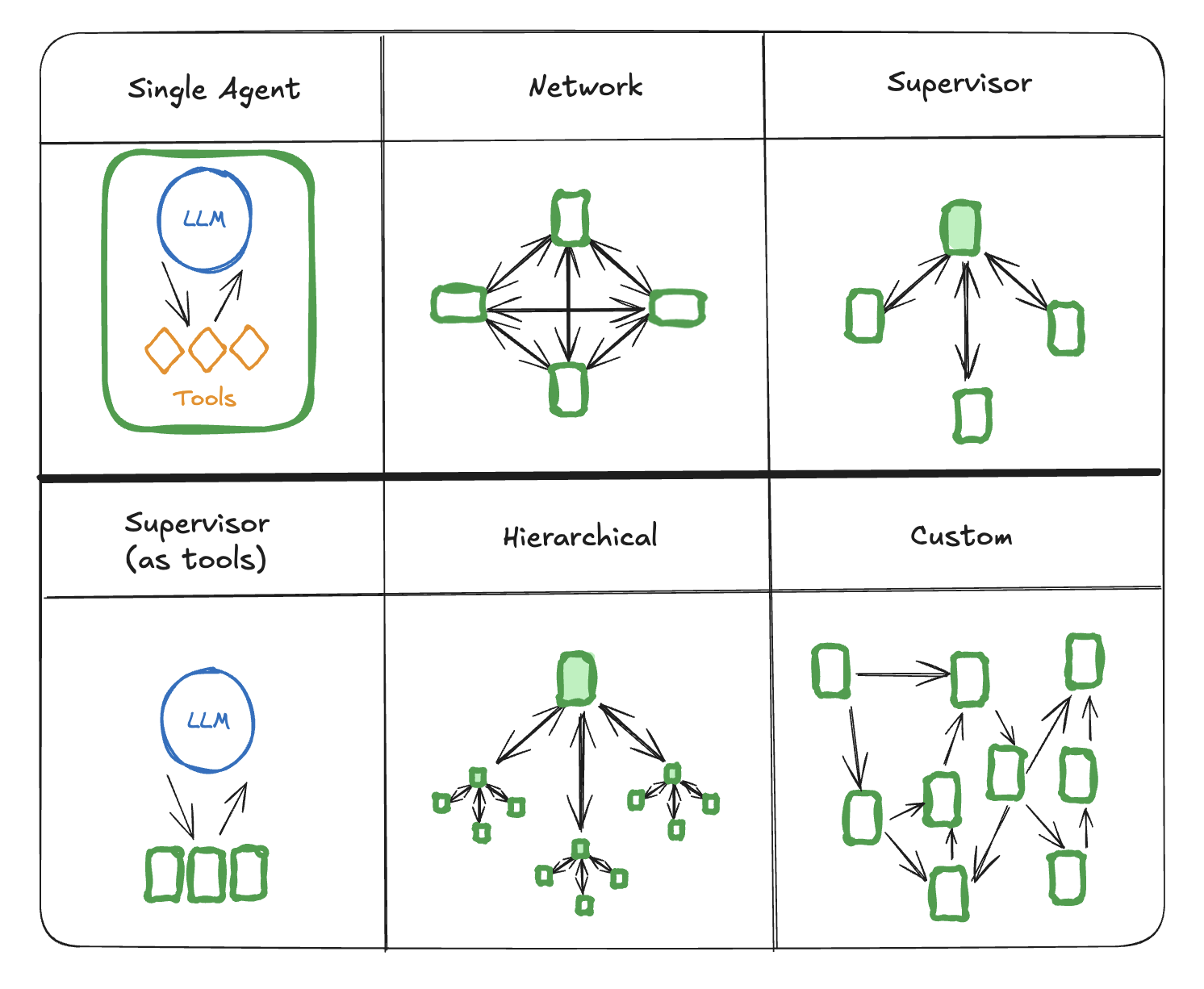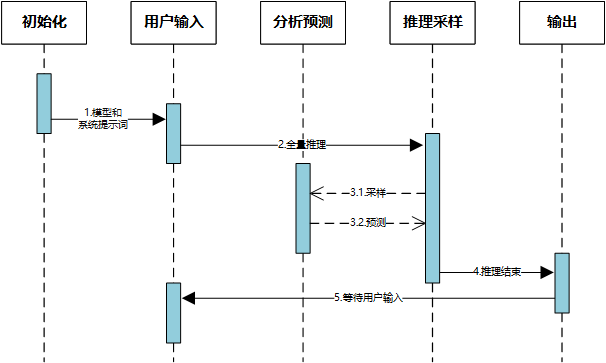一些LLM除了生成文本,还可触发操作。
所有支持tools的LLMs可在此处找到(参见“Tools”栏)。
有一个被称为“工具(tools)”或“函数调用(function calling)”的概念。它允许LLM在必要时调用一或多个由开发者定义的工具。工具可以是任何东西:网页搜索、外部API调用、或执行一段特定代码等。LLM本身无法实际调用这些工具;它们会在响应中表达出调用某个工具的意图(而不是直接生成文本)。我们开发者,则需要根据提供的参数来执行这些工具并报告工具执行结果。
如我们知道LLM本身并不擅长数学运算。若你的应用场景涉及偶尔的数学计算,你可能希望为LLM提供一个“math tool”。通过在请求中声明一个或多个工具,LLM可以在认为适合时调用其中一个。如遇到数学问题并拥有一组数学工具时,LLM可能会决定首先调用其中的一个来正确回答问题。
1 有无工具时的效果
1.1 没有工具的消息示例
Request:
- messages:
- UserMessage:
- text: What is the square root of 475695037565?
Response:
- AiMessage:
- text: The square root of 475695037565 is approximately 689710.
接近正确,但不完全对。
1.2 使用以下工具的消息示例
@Tool("Sums 2 given numbers")
public double sum(double a, double b) {
return a + b;
}
@Tool("Returns a square root of a given number")
public double squareRoot(double x) {
return Math.sqrt(x);
}
Request 1:
- messages:
- UserMessage:
- text: What is the square root of 475695037565?
- tools:
- sum(double a, double b): Sums 2 given numbers
- squareRoot(double x): Returns a square root of a given number
Response 1:
- AiMessage:
- toolExecutionRequests:
- squareRoot(475695037565)
... here we are executing the squareRoot method with the "475695037565" argument and getting "689706.486532" as a result ...
Request 2:
- messages:
- UserMessage:
- text: What is the square root of 475695037565?
- AiMessage:
- toolExecutionRequests:
- squareRoot(475695037565)
- ToolExecutionResultMessage:
- text: 689706.486532
Response 2:
- AiMessage:
- text: The square root of 475695037565 is 689706.486532.
如你所见,当LLM拥有工具时,它可在适当时决定调用其中的一个。
这是一个非常强大的功能。这简单例子,我们给LLM提供原始的数学工具,但可想象如提供如googleSearch和sendEmail工具,然后提供一个查询“我的朋友想知道AI领域的最新消息。请将简短的总结发送到friend@email.com”,那它可用googleSearch工具找到最新消息,然后总结并通过sendEmail工具发送总结。
经验法则
为了增加LLM调用正确工具和参数的几率,我们应该提供清晰且明确的:
- 工具名称
- 工具的功能描述以及何时使用
- 每个工具参数的描述
一个好的经验法则是:如果人类能理解工具的用途和如何使用,那么LLM也能理解。
LLM被专门微调,以检测何时调用工具以及如何调用它们。某些模型甚至可以一次调用多个工具,如OpenAI。
注意,工具/函数调用与JSON模式不同。
2 两个抽象层次
LangChain4j 提供两个使用工具的抽象层:
- 底层,使用
ChatLanguageModelAPI - 高级,使用AI服务和
@Tool注解的Java方法
3 底层工具API
3.1 generate
可用ChatLanguageModel#generate(List:
/**
* 根据消息列表和工具规范列表从模型生成响应。响应可以是文本消息,也可以是执行指定工具之一的请求。通常,该列表包含按以下顺序排列的消息:System (optional) - User - AI - User - AI - User ...
* messages – 消息列表
* toolSpecifications – 允许模型执行的工具列表。该模型自主决定是否使用这些工具中的任何一个
* return:模型生成的响应
* AiMessage 可以包含文本响应或执行其中一个工具的请求。
*/
default Response generate(List messages, List toolSpecifications) {
throw new IllegalArgumentException("Tools are currently not supported by this model");
}
类似方法也存于StreamingChatLanguageModel。
3.2 ToolSpecification
package dev.langchain4j.agent.tool;
// 包含工具所有信息
public class ToolSpecification {
// 工具的`名称`
private final String name;
// 工具的`描述`
private final String description;
// 工具的`参数`及其描述
private final ToolParameters parameters;
推荐尽可能提供关于工具的所有信息:清晰的名称、详尽的描述和每个参数的描述等。
3.2.1 创建ToolSpecification
① 手动
ToolSpecification toolSpecification = ToolSpecification.builder()
.name("getWeather")
.description("返回指定城市的天气预报")
.addParameter("city", type("string"), description("应返回天气预报的城市"))
.addParameter("temperatureUnit", enums(TemperatureUnit.class)) // 枚举 TemperatureUnit { 摄氏, 华氏 }
.build();
② 使用辅助方法
ToolSpecifications.toolSpecificationsFrom(Class)ToolSpecifications.toolSpecificationsFrom(Object)ToolSpecifications.toolSpecificationFrom(Method)
class WeatherTools {
@Tool("Returns the weather forecast for a given city")
String getWeather(
@P("The city for which the weather forecast should be returned") String city,
TemperatureUnit temperatureUnit
) {
...
}
}
List toolSpecifications = ToolSpecifications.toolSpecificationsFrom(WeatherTools.class);
一旦你拥有List,可调用模型:
UserMessage userMessage = UserMessage.from("伦敦明天的天气如何?");
Response response = model.generate(List.of(userMessage), toolSpecifications);
AiMessage aiMessage = response.content();
若LLM决定调用工具,返回的AiMessage将包含toolExecutionRequests字段中的数据。此时,AiMessage.hasToolExecutionRequests()将返回true。根据LLM不同,它可包含一或多个ToolExecutionRequest对象(某些LLM支持并行调用多个工具)。
每个ToolExecutionRequest应包含:
public class ToolExecutionRequest {
// 工具调用的`id`(某些LLM不提供)
private final String id;
// 要调用的工具名称,例如:`getWeather`
private final String name;
// 工具的`参数`,例如:`{ "city": "London", "temperatureUnit": "CELSIUS" }`
private final String arguments;
你要用ToolExecutionRequest中的信息手动执行工具。
如希望将工具执行的结果发回LLM,你要为每个ToolExecutionRequest创建一个ToolExecutionResultMessage并与之前的所有消息一起发送:
String result = "预计明天伦敦会下雨。";
ToolExecutionResultMessage toolExecutionResultMessage = ToolExecutionResultMessage.from(toolExecutionRequest, result);
List messages = List.of(userMessage, aiMessage, toolExecutionResultMessage);
Response response2 = model.generate(messages, toolSpecifications);
4 高级工具API
高层,你可为任何Java方法添加@Tool注解,并将其与AI服务一起使用。
AI服务会自动将这些方法转换为ToolSpecification,并在每次与LLM的交互中包含它们。当LLM决定调用工具时,AI服务将自动执行相应的方法,并将方法的返回值(如果有)发送回LLM。实现细节可以在DefaultToolExecutor中找到。
@Tool("Searches Google for relevant URLs, given the query")
public List searchGoogle(@P("search query") String query) {
return googleSearchService.search(query);
}
@Tool("Returns the content of a web page, given the URL")
public String getWebPageContent(@P("URL of the page") String url) {
Document jsoupDocument = Jsoup.connect(url).get();
return jsoupDocument.body().text();
}
4.1 @Tool
任何用@Tool注解并在构建AI服务时明确指定的Java方法,都可以被LLM执行
interface MathGenius {
String ask(String question);
}
class Calculator {
@Tool
public double add(int a, int b) {
return a + b;
}
@Tool
public double squareRoot(double x) {
return Math.sqrt(x);
}
}
MathGenius mathGenius = AiServices.builder(MathGenius.class)
.chatLanguageModel(model)
.tools(new Calculator())
.build();
String answer = mathGenius.ask("What is the square root of 475695037565?");
System.out.println(answer); // The square root of 475695037565 is 689706.486532.
调用ask方法时,会发生两次与LLM的交互,如前文所述。交互期间,会自动调用squareRoot方法。
@Tool注解有两个可选字段:
name: 工具的名称。如果未提供,方法名将作为工具名称。value: 工具的描述。
根据具体工具,即使不提供描述,LLM也可能理解其用途(例如,add(a, b)很明显),但通常最好提供清晰且有意义的名称和描述。这样,LLM在决定是否调用工具以及如何调用时会有更多信息。
4.2 @P
方法的参数可以使用@P注解。
@P注解有两个字段:
value: 参数的描述,此字段是必填的。required: 参数是否是必需的,默认值为true,此字段为可选。
4.3 @ToolMemoryId
如果AI服务方法的某个参数使用了@MemoryId注解,则可以在@Tool方法的参数上使用@ToolMemoryId进行注解。这样,提供给AI服务方法的值将自动传递给@Tool方法。这对于多个用户和/或每个用户有多个聊天或记忆的场景非常有用,可以在@Tool方法中区分它们。
4.4 访问已执行的工具
如果你希望访问AI服务调用过程中执行的工具,可以通过将返回类型封装在Result类中轻松实现:
interface Assistant {
Result chat(String userMessage);
}
Result result = assistant.chat("取消我的预订 123-456");
String answer = result.content();
List toolExecutions = result.toolExecutions();
4.5 以编程方式指定工具
在使用AI服务时,也可以通过编程方式指定工具。这种方法非常灵活,因为工具可以从外部资源(如数据库和配置文件)加载。
工具名称、描述、参数名称和描述都可以使用ToolSpecification进行配置:
ToolSpecification toolSpecification = ToolSpecification.builder()
.name("get_booking_details")
.description("返回预订详情")
.addParameter("bookingNumber", type("string"), description("B-12345格式的预订编号"))
.build();
对于每个ToolSpecification,需要提供一个ToolExecutor实现来处理LLM生成的工具执行请求:
ToolExecutor toolExecutor = (toolExecutionRequest, memoryId) -> {
Map arguments = fromJson(toolExecutionRequest.arguments());
String bookingNumber = arguments.get("bookingNumber").toString();
Booking booking = getBooking(bookingNumber);
return booking.toString();
};
一
旦我们拥有一个或多个(ToolSpecification,ToolExecutor)对,我们可以在创建AI服务时指定它们:
Assistant assistant = AiServices.builder(Assistant.class)
.chatLanguageModel(chatLanguageModel)
.tools(singletonMap(toolSpecification, toolExecutor))
.build();
4.6 动态指定工具
在使用AI服务时,每次调用时也可以动态指定工具。可以配置一个ToolProvider,该提供者将在每次调用AI服务时被调用,并提供应包含在当前请求中的工具。ToolProvider接受一个包含UserMessage和聊天记忆ID的ToolProviderRequest,并返回包含工具的ToolProviderResult,其形式为ToolSpecification到ToolExecutor的映射。
下面是一个示例,展示如何仅在用户消息中包含“预订”一词时添加get_booking_details工具:
ToolProvider toolProvider = (toolProviderRequest) -> {
if (toolProviderRequest.userMessage().singleText().contains("booking")) {
ToolSpecification toolSpecification = ToolSpecification.builder()
.name("get_booking_details")
.description("返回预订详情")
.addParameter("bookingNumber", type("string"))
.build();
return ToolProviderResult.builder()
.add(toolSpecification, toolExecutor)
.build();
} else {
return null;
}
};
Assistant assistant = AiServices.builder(Assistant.class)
.chatLanguageModel(model)
.toolProvider(toolProvider)
.build();
5 示例
参考:
关注我,紧跟本系列专栏文章,咱们下篇再续!
作者简介:魔都架构师,多家大厂后端一线研发经验,在分布式系统设计、数据平台架构和AI应用开发等领域都有丰富实践经验。
各大技术社区头部专家博主。具有丰富的引领团队经验,深厚业务架构和解决方案的积累。
负责:
- 中央/分销预订系统性能优化
- 活动&券等营销中台建设
- 交易平台及数据中台等架构和开发设计
- 车联网核心平台-物联网连接平台、大数据平台架构设计及优化
- LLM Agent应用开发
- 区块链应用开发
- 大数据开发挖掘经验
- 推荐系统项目
目前主攻市级软件项目设计、构建服务全社会的应用系统。
参考:
本文由博客一文多发平台 OpenWrite 发布!
1.本站内容仅供参考,不作为任何法律依据。用户在使用本站内容时,应自行判断其真实性、准确性和完整性,并承担相应风险。
2.本站部分内容来源于互联网,仅用于交流学习研究知识,若侵犯了您的合法权益,请及时邮件或站内私信与本站联系,我们将尽快予以处理。
3.本文采用知识共享 署名4.0国际许可协议 [BY-NC-SA] 进行授权
4.根据《计算机软件保护条例》第十七条规定“为了学习和研究软件内含的设计思想和原理,通过安装、显示、传输或者存储软件等方式使用软件的,可以不经软件著作权人许可,不向其支付报酬。”您需知晓本站所有内容资源均来源于网络,仅供用户交流学习与研究使用,版权归属原版权方所有,版权争议与本站无关,用户本人下载后不能用作商业或非法用途,需在24个小时之内从您的电脑中彻底删除上述内容,否则后果均由用户承担责任;如果您访问和下载此文件,表示您同意只将此文件用于参考、学习而非其他用途,否则一切后果请您自行承担,如果您喜欢该程序,请支持正版软件,购买注册,得到更好的正版服务。
5.本站是非经营性个人站点,所有软件信息均来自网络,所有资源仅供学习参考研究目的,并不贩卖软件,不存在任何商业目的及用途











暂无评论内容